bio 181 chapter 3+4
1/15
There's no tags or description
Looks like no tags are added yet.
Name | Mastery | Learn | Test | Matching | Spaced |
|---|
No study sessions yet.
16 Terms

Which container has the lowest concentration of molecules?
a. Container A
b. Container B
c. Container C
d. Container D
Container B

Which series lists the containers in order of their concentrations of molecules, from lowest concentration to highest concentration?
a. D, C, A, B
b. A, B, C, D
c. B, A, C, D
B, A, C, D
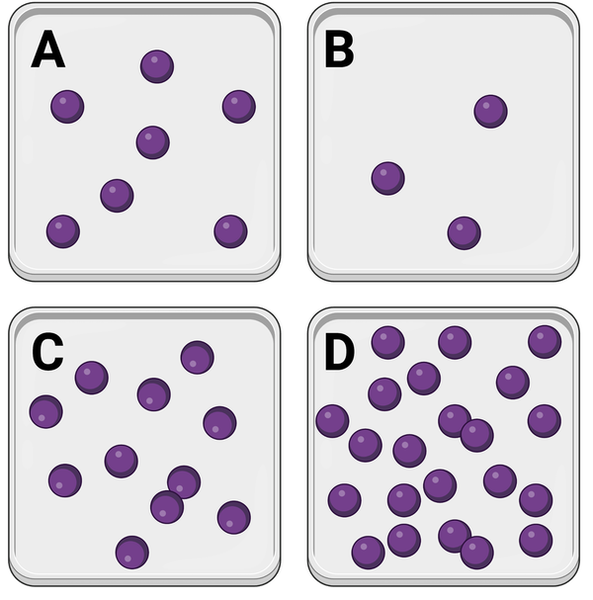
In which container would you expect to observe the greatest number of interactions between molecules?
In which container would you expect to observe the greatest number of interactions between molecules?
a. Container A
b. Container B
c. Container C
d. Container D
d. Container D

The figure shows a container in which a set of identical molecules (purple dots) are diffusing. Two areas of equal size are designated by dashed lines (area A and area B). The molecule labeled as X is the same distance from area A and from area B.
Which statement is correct?
a. Molecule X will more likely diffuse to area A before diffusing to area B.
b. Molecule X will more likely diffuse to area B before diffusing to area A.
c. Molecule X is equally likely to diffuse to area A or area B.
c. Molecule X is equally likely to diffuse to area A or area B.

The figure shows an initial distribution of molecules (purple dots) dissolved in a beaker of water. Beakers A through D show four potential distributions of the molecules after some time.
Which of these potential distributions is most likely to be observed?
a. Distribution A
b. Distribution B
c. Distribution C
d. Distribution D
c. Distribution C
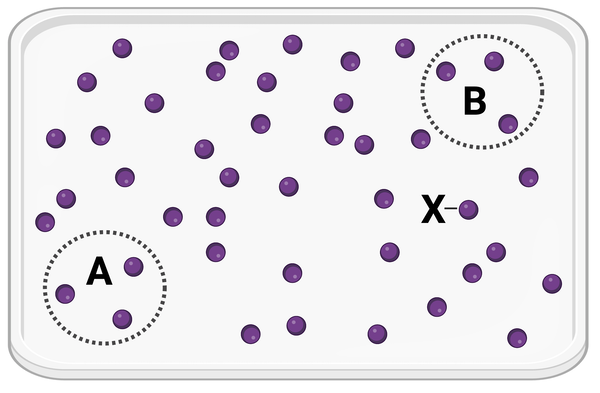
The figure shows a container in which a set of identical molecules (purple dots) are diffusing. Two areas of equal size are designated by dashed lines (area A and area B). The molecule labeled as X is closer to area B than it is to area A.
Which statement is correct?
a. Molecule X will more likely diffuse to area A before diffusing to area B.
c. Molecule X is equally likely to diffuse to area A or area B.
b. Molecule X will more likely diffuse to area B before diffusing to area A.
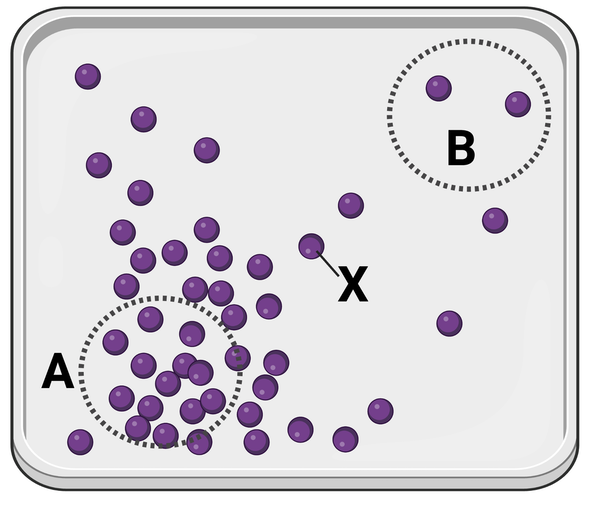
The figure shows a container in which a set of identical molecules (purple dots) are diffusing. Two areas of equal size are designated by dashed lines (area A and area B). The molecule labeled as X is the same distance from area A and from area B.
Which statement is correct?
a. Molecule X will more likely diffuse to area A before diffusing to area B.
b. Molecule X will more likely diffuse to area B before diffusing to area A.
c. Molecule X is equally likely to diffuse to area A or area B.
b. Molecule X will more likely diffuse to area B before diffusing to area A.
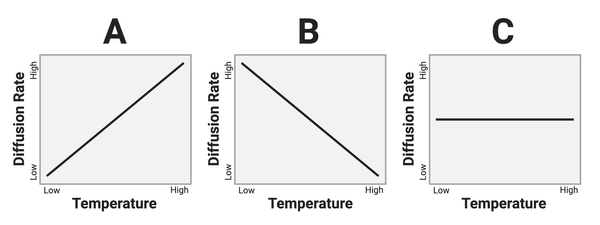
The figure shows three hypothetical relationships between temperature and the rate of diffusion.
Which graph shows the most likely relationship?
a. Graph A
b. Graph B
c. Graph C
a. Graph A

The figure below presents three graphs. Each graph below shows a relationship between the concentration gradient of a solute and the rate of diffusion in a solution.
Which graph shows the most likely relationship?
a. Graph A
b. Graph B
c. Graph C
a. Graph A
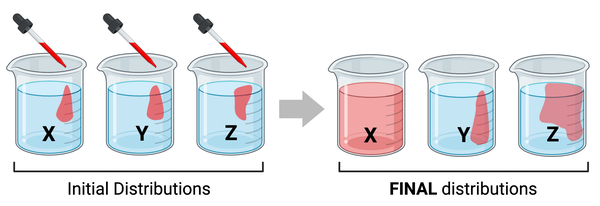
The figure shows the same amount of red liquid being added to each of three beakers of water (see initial distributions). The molecular mass of the molecules in the red liquid differs among beakers. After 10 minutes, you notice that the red liquid has diffused at a different rate in each beaker (see final distributions).
Which series lists the beakers in order of the molecular masses of the molecules, from highest mass to lowest mass?
a. X > Y > Z
b. Y > Z > X
c. Z > X > Y
b. Y > Z > X
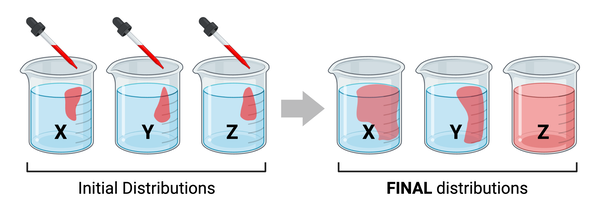
The figure shows the same amount of red liquid being added to each of three beakers of water (see initial distributions). The molecular mass of the molecules in the red liquid differs among beakers. After 10 minutes, you notice that the red liquid has diffused at a different rate in each beaker (see final distributions).
What are the most likely temperatures of the three beakers?
a. X= 0℃, Y= 50℃, Z= 95℃
b. X= 95℃, Y= 0℃, Z= 50℃
c. X= 50℃, Y= 0℃, Z= 95℃
c. X= 50℃, Y= 0℃, Z= 95℃
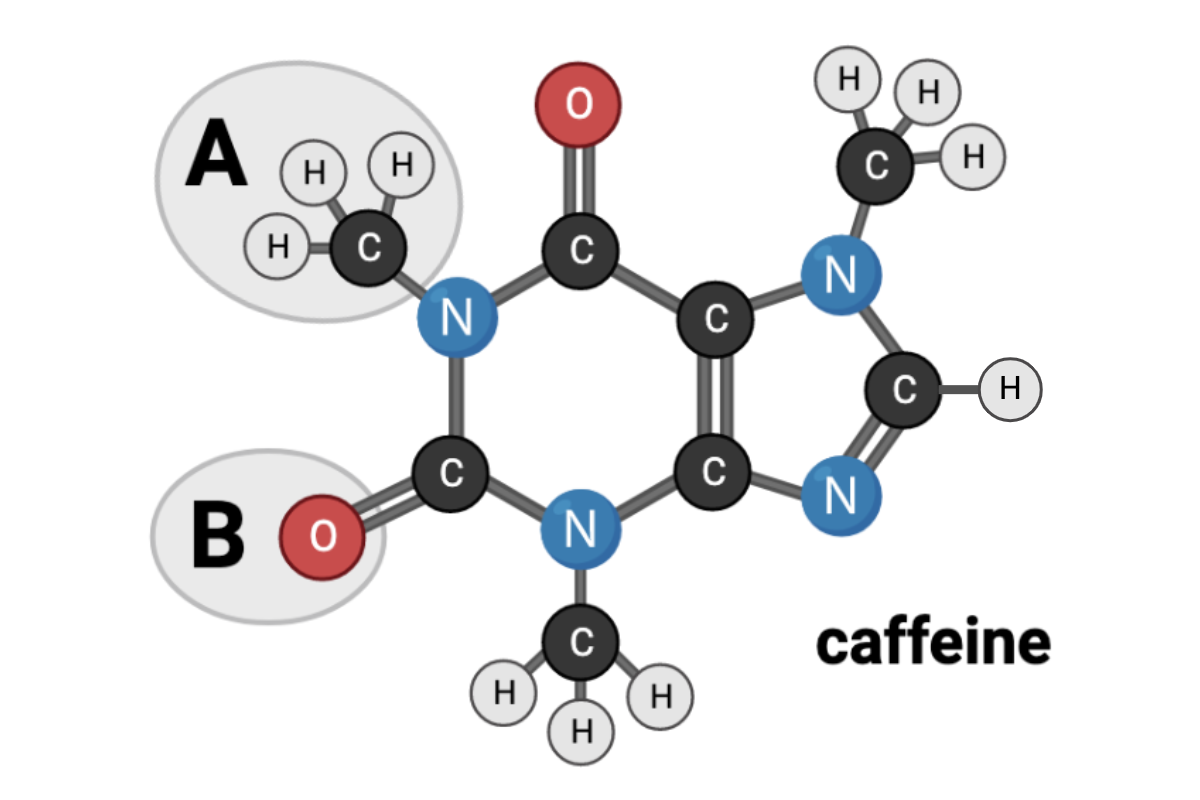
Which terms accurately describe the chemical nature of Region A? Select all that apply.
a. nonpolar
b. polar
d. hydrophilic
a. nonpolar
c. hydrophobic
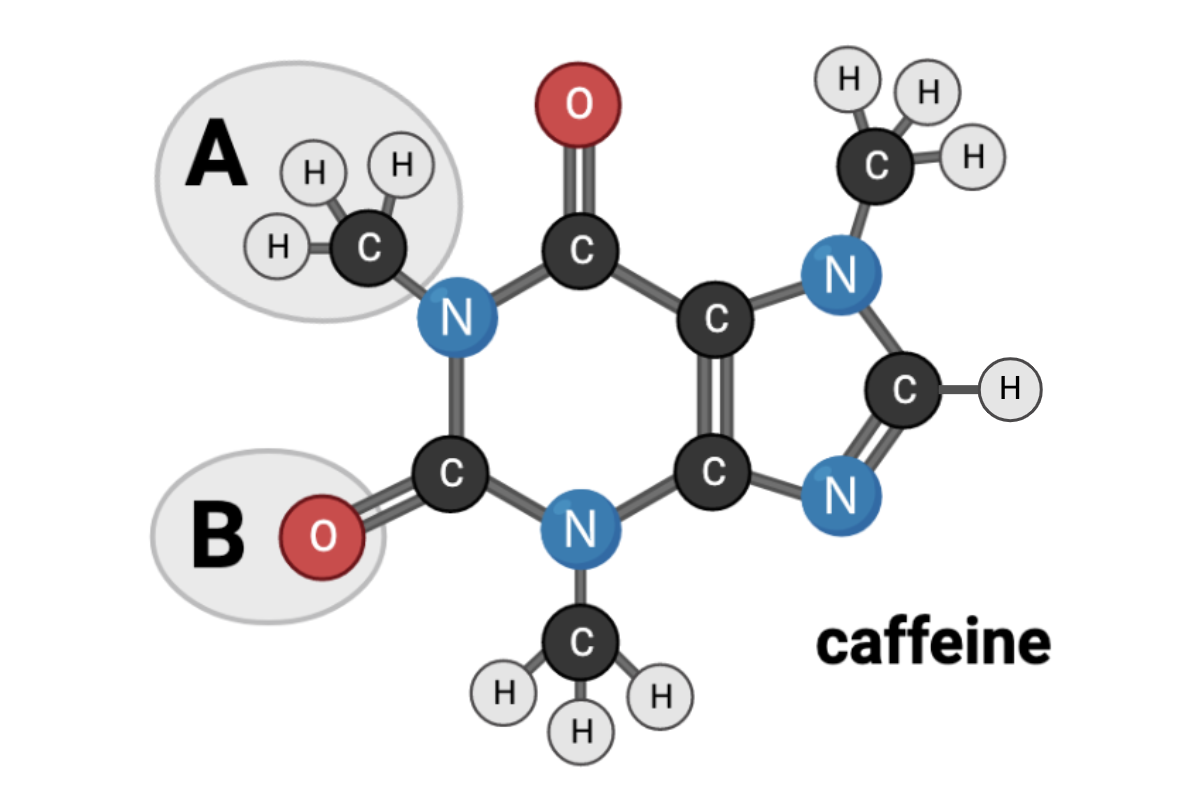
Which terms accurately describe the chemical nature of Region B? Select all that apply.
a. nonpolar
b. polar
c. hydrophobic
d. hydrophilic
b. polar
d. hydrophilic

Which diagram shows how water molecules are most likely to interact?
a. Diagram A
b. Diagram B
c. Diagram C
d. Diagram D
c. Diagram C

Which chemical property most likely describes the unknown molecule?
a. negatively charged
b. positively charged
c. without a charge.
d. hydrophobic
e. nonpolar
a. negatively charged

Which of these bonds accurately represents a hydrogen bond? Select all that apply.
a. 1
b. 2
c. 3
d. 4
e. 5
f. 6
a. 1
d. 4